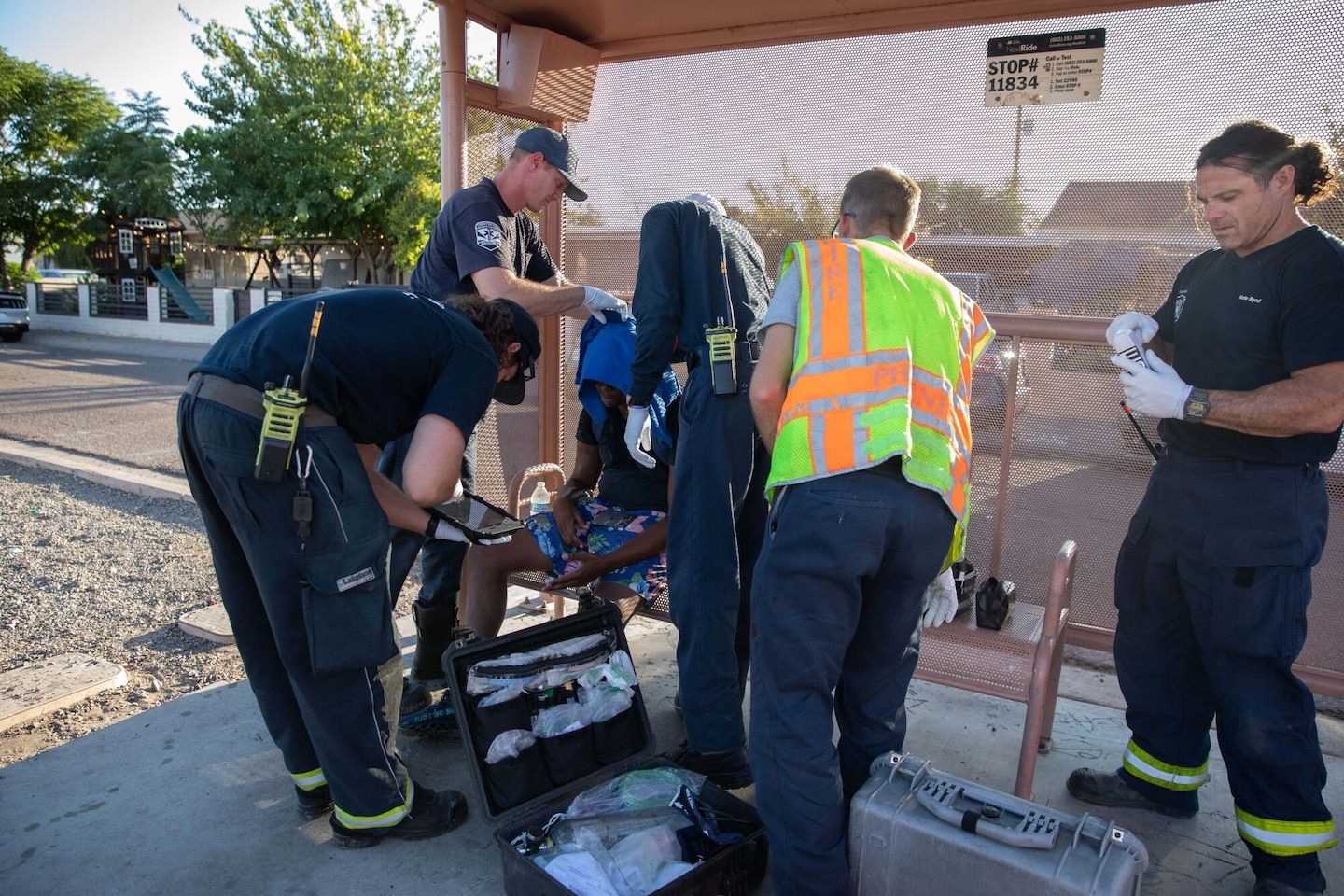When every day somewhere is a climate record of some sort
Listen 7 min Comment on this story Comment Gift Article Share
LONDON — We are now living on a planet with a record number of record-breaking climate events. News of the hottest June was quickly eclipsed by the declaration of Earth’s hottest day, a record that would be broken 16 more times before the end of July, which registered as Earth’s hottest month.
And it’s not going to end, really. We are on a streak.
For decades to come, under almost all scenarios, climate scientists say we should be prepared to see records shattered so frequently, so routinely, that the statistics and the superlatives — warmest, wettest, lowest, driest — might melt together in the public mind like asphalt in August.
The previously abnormal is becoming our normal.
“These events are not rare anymore,” said the authors of a study that found July’s protracted heat waves in the United States, Asia and Europe would have been “virtually impossible” without climate change.
Just a few years ago, experts often insisted on caveats in their discussions with reporters and politicians, anxious about linking any one record-breaking event to human-caused climate change. They are more confident today to make those assertions, based on observed data and computer simulations.
Advertisement
They don’t exactly say, “We told you so.” But they come close. Their climate models are proving remarkably prescient.
Ten years ago, “We were talking about climate change and the impacts as something that you would see in the future. I think everybody now sees it on their television screens or even just outside the window,” said Jim Skea, professor at Imperial College London and the newly appointed chair of the U.N. Intergovernmental Panel on Climate Change.
He told The Washington Post: “Scientists have predicted that this is the kind of world in which we will be moving into. But I think there is some surprise about what we’ve seen this summer coming so quickly.”
There are now so many records being smashed that you need a spreadsheet to keep up.
The National Oceanic and Atmospheric Administration (NOAA) tallied that the United States broke nearly 3,000 heat records in the past 30 days.
The historic heat included 128 degrees Fahrenheit registered in Death Valley, Calif. — two degrees short of the highest reliably measured temperature on Earth — as well as a dangerous 31 straight days above 110 degrees Fahrenheit in Phoenix.
It is not just land surface temperatures that are troubling.
Advertisement
Ocean temperatures are off the charts, too. Florida has been seeing sea surface records at hot tub settings, leading to massive die-off of coral in the Keys. In the North Atlantic, off Newfoundland, average sea surface temperatures have been approaching 77 degrees Fahrenheit, almost beyond the most extreme predictions.
Also startling: Scientists have been pointing to exceptionally low sea ice at both poles. One recent scientific analysis read: “Arctic, low. Antarctic, whoa.”
Scientists know that all these records — even fractions of a degree rise and fall — describe the realities facing people and plants and animals around the globe.
Carlo Buontempo, director of the European Union’s Copernicus Climate Change Service, has thought a lot about records and how to communicate what they mean.
To a child, one might say that was the warmest July you have ever seen. “But there is another way to think about it,” he said. “It is possible to flip the story around and to say, ‘Well, this is probably one of the coolest summers you’ll ever see in your life.’”
Advertisement
He admits, “It is quite scary to put it this way.”
But 20 or 30 years in the future, he said, it is possible that 2023 “won’t be remembered as a very hot year.”
The continued rise in emissions of greenhouse gases has effectively locked in rising temperatures through the 2030s, said Buontempo — though he stressed that swift and steep curbs in emissions now could still help later in the century.
Rob Jackson, a professor of earth system science at Stanford University, said publicizing extreme temperatures and weather disasters is “important for conveying how quickly the earth is changing.”
But it could also create “climate anxiety and dismay.”
He said, “I have no idea how to balance those competing factors.”
This is a topic many climate scientists are wrestling with. They want the world to act in response to the extreme weather events that are occurring with unprecedented frequency. They don’t want Earthlings to give up. Or become desensitized.
Advertisement
“On the one hand, these extremes grab attention and make the abstract qualities of climate change more concrete and visible,” said Josh Ettinger, a researcher at the Environmental Change Institute at the University of Oxford. “On the other hand, we could see a shifting baseline effect, in which we become accustomed to records being broken all the time, and they have less of a psychological impact.”
Richard Rood, a professor at the University of Michigan, understands “record fatigue.” He used to blog on climate records for the website Weather Underground. He stopped in 2014. It got repetitive. As so many records were being broken.
He told The Post, “For the most part, I don’t think that the records focus the mind.”
Rood suggested the need for a different emphasis: “We are at the start of a trajectory where we will need to relearn how to live with the weather,” because “our past practices are no longer adequate for dealing with extreme events.”
Still, Russell Vose, an expert in climate analysis at the National Oceanic and Atmospheric Administration, said a string of record-breaking heat in the American southwest might be more attention-grabbing for the public than another international assessment by scientists — even if frequent, prolonged, intense heat waves are exactly what those assessments have been predicting for years.
Advertisement
“Like anything else in the news cycle, attention to these sorts of things will wax and wane. But then, after a while, something even more extreme comes along and has horrible impacts somewhere, and we all focus our attention on it again,” he said.
While scientists are confident that the trend line, overall, is for a warmer planet with more intense weather, normal variability will continue. There will be hot years and less hot. While Rome baked in July sun, London was cool and damp. The extremes this summer are driven in part by the reappearance of El Niño conditions in the tropical Pacific Ocean, which is accompanied by warmer-than-average water temperatures at the sea surface. These events are episodic.
Michael Mann, director of the Center for Science, Sustainability and the Media at the University of Pennsylvania, said he was concerned about “a tendency in some circles to cherry-pick individual records to provide an exaggerated and even ‘doomist’ depiction of what’s happening.”
“We should explain that record-breaking events are not evidence of a ‘tipping point’ or ‘runaway warming,’” he said. “We need to step back and look at the bigger picture,” which is “that the planet is steadily warming and will continue to do so as long as we generate carbon pollution.”
He said that alone “is frightening enough.”
Gift this article Gift Article
Source: The Washington Post


